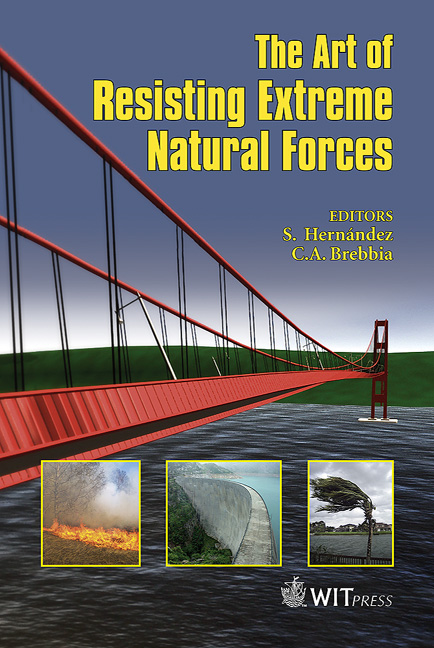Improvement Analysis Of Long-span Bridges Flutter: Messina Bridge Example
Price
Free (open access)
Transaction
Volume
58
Pages
10
Published
2007
Size
1,308 kb
Paper DOI
10.2495/EN070021
Copyright
WIT Press
Author(s)
J. Á. Jurado, A. León, F. Nieto & S. Hernández
Abstract
The hybrid methods used in the aeroelastic analysis of flutter for long-span bridges are computational, but they use coefficients and functions obtained experimentally in a wind tunnel. The experimental testings are carried out with a deck sectional model and there are two types: an aerodynamic testing for obtaining the aerodynamic coefficients such as drag, lift and moment, and an aeroelastic testing for obtaining the flutter derivatives, that the model oscillates under free vibration suspended by springs. In this paper, some improvements were achieved in the experimental phase as well as in the computational phase of the method. The influence of variation of the aerodynamic coefficients were studied with Reynold’s number; different sets of springs were used to include a wide range of reduced velocities that the flutter derivatives depend on; the influence of deformation that the static wind load produces at the angle of attack along the bridge span was studied; finally this angle of attack was taken into account to determine the flutter derivatives used at each part of the deck. These improvements were applied to the sectional and computational models of the future Messina Strait Bridge in Italy. Keywords: aeroelasticity, long-span bridges, flutter, sectional tests. 1 Introduction The flutter condition on long-span bridges is critical during the design of these structures. To avoid experimental tests of completed bridge models in large wind tunnels that are complicated and expensive, it is necessary to use a hybrid method which is computational based but needs experimental parameters.
Keywords
aeroelasticity, long-span bridges, flutter, sectional tests.





